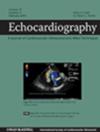Fetal Myocardial Performance Index in the Late Third Trimester for the Prediction of Intrapartum Cardiotocographic Abnormalities
Abstract
Objective
We sought to determine whether fetal myocardial performance index (MPI) performed in the late third trimester could predict abnormal intrapartum cardiotocographic (CTG) patterns.
Methods
A prospective observational study including women presenting for fetal growth ultrasound from 32 weeks. Three consecutive measurements of the left ventricular MPI were obtained and averaged. The patients’ intrapartum CTG events were later observed.
Results
A total of 299 women were analyzed. The fetal MPI across the population were 0.41, 0.50 and 0.63, representing 10th, 50th and 90th centiles, respectively. A one-way analysis of variance (ANOVA) did not show a significant difference in MPI values across intrapartum findings for normal, suspicious and pathological CTGs [F (3, 298) = 0.417, p = 0.57], and upon logistic regression, no relationship was observed between MPI and abnormal intrapartum CTG: odds ratio (OR) 2.15; 95% confidence interval (95% CI) (0.036–160.9); p = 0.718. There was also no difference in mean fetal MPI for those women who had pre-eclampsia [0.36; 95% CI (-0.04 to 0.05); p = 0.76], gestational diabetes [t (57.31) = -0.34, p = 0.73] and fetal growth restriction [0.49; 95% CI (-0.02 to 0.06); p = 0.56] compared to the low-risk women. Furthermore, MPI had a modest sensitivity (62.5%) and specificity (50.9%) with a positive and negative predictive value of 31.3% and 79.2%, respectively, for detecting abnormal intrapartum CTG. The discriminatory ability of MPI for abnormal CTG was also poor (AUC = 0.53), besides having minimal diagnostic value (positive likelihood ratio of 1.27% and negative predictive value of 0.74%). No association was found between fetal MPI and admission to neonatal intensive care unit: OR 0.53; 95% CI (0.19–1.51).
Conclusion
Fetal MPI obtained in the late third trimester is a poor predictor for abnormal intrapartum fetal heart patterns and neonatal outcomes.
Summary
- Myocardial performance index is higher in fetuses with fetal growth restriction, obstetric cholestasis, gestational diabetes mellitus and is associated with adverse perinatal outcomes.
- Myocardial hypoxia could lead to abnormal intrapartum fetal heart rate patterns on cardiotocogram.
- There is no correlation between a high myocardial performance index and intrapartum cardiotocographic abnormalities.

 求助内容:
求助内容: 应助结果提醒方式:
应助结果提醒方式:


